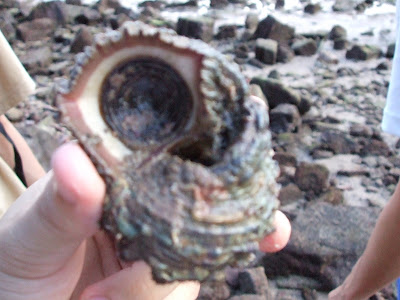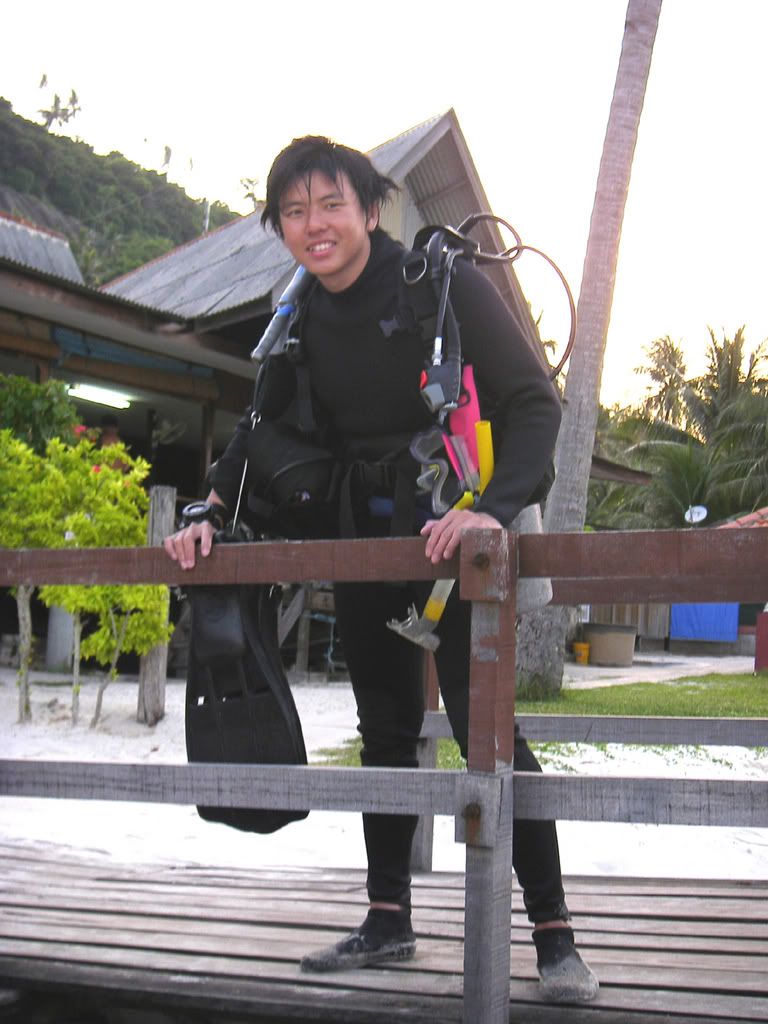The structure was about 8m by 2m made up of metal pickets, metal strings, hola loops and 1.5L water bottles (Refer to picture below) and was supposed to be a training circuit for a speciality module in diving.

However, there were some questionable issues to be addressed about this project.
First, the materials used for the structure were definately harmful to the environment. Mainly, the paintworks of the metal pickets will react with the seawater causing it to peel off. Such fragments will inevitably be toxic when consumed by any marine creatures. To make it worst, PLASTIC BOTTLES and HOLA HOOPS are well-known trash in the marine environment. Hence, when the structure breaks apart, it will definitely contribute to the millions of tonnes of trash already floating in the oceans.
Secondly, this stucture was doubtlessly not sturdy enough to withstand the forces of nature, for example, underwater currents, corrosive nature of seawater. This was because the structures were merely tied together and not well cemented to each other. Also, the WATER BOTTLES were tied to the handle could easily be detached. Hence, not undermining the FORCES OF NATURE, this structure would indeed not endure.
However, sources had it that the organisers claimed that this structure was located in a sheltered area. This point can easily be disputed with the fact that is there really an area underwater which is free from the works of nature.
Therefore, supplied with sufficient data from various sources, the marine park authorities of Malaysia deployed their craft 2 weeks later to search and remove the structure. Below is the rough location of the structure.
.jpg)
Hence, on a Saturday morning, an undislosed number of divers plunge off the marine park's speedboat to search for the structure and found it at depth of 18m.
To our surprise, the structure was already DISINTEGRATED, leaving only the metal frame on the seabed. To top it up, it is located extremely close to the reef (refer to the picture below). Also THE STRUCTURE WAS NOT LOCATED AT THE SHELTERED REGION OF THE COVE!



As such, we planned to remove the structure immediately before this structure disintegrate further. Thus, with our limited manpower, and careful planning and organisation, we managed to dismantle and remove the structure from the seabead within 45mins, while preventing any damage to the surrounding reefs.
As such, there are a few questions to be addressed.
Please note that this is a professional entry... Comments are definitely welcomed... But I would appreciate if anyone who comments refrain from any personal attacks.... Also, it will be good to identify yourself when commenting...



































 As this longkang is in close proximity to a mangrove habitat, some of the mangrove species were also seen, mainly the gobies..
As this longkang is in close proximity to a mangrove habitat, some of the mangrove species were also seen, mainly the gobies..

 Also, a tree climbing crab (Episesarma sp.)was spotted by KS at the edge of the longkang (picture above). Some small mudlobster mounds (no picture) and burrows (picture below) were seen around the longkang as well. Species from the subphylum Crustacea (refer to the
Also, a tree climbing crab (Episesarma sp.)was spotted by KS at the edge of the longkang (picture above). Some small mudlobster mounds (no picture) and burrows (picture below) were seen around the longkang as well. Species from the subphylum Crustacea (refer to the 



 It is a period of debris. bloggers, writing from a hiden base, have won their first victory against the destruction to the intertidals of Labrador.
It is a period of debris. bloggers, writing from a hiden base, have won their first victory against the destruction to the intertidals of Labrador.








